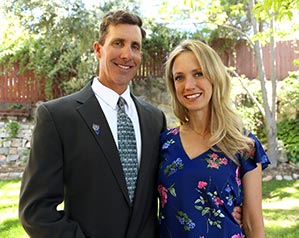| Primary Election: June 12, 2018 | General Election: November 6, 2018 |
| Register to Vote: – Mail: Postmarked by May 15, 2018 – Online: May 24, 2018 – In-Person: May 22, 2018 |
Register to Vote: – Mail: Postmarked by October 9, 2018 – Online: October 18, 2018 – In-Person: October 16, 2018 |
| Early Voting: – Begins: May 26, 2018 – Ends: June 8, 2018 |
Early Voting: – Begins: October 20, 2018 – Ends: November 2, 2018 |
| Absentee Ballot: – Request: June 5, 2018 – Return: June 12, 2018 |
Absentee Ballot: – Request: October 30, 2018 – Return: November 6, 2018 |
Registering to vote: (It’s a closed primary, for instance, in order to vote for Jared, you would need to register as a Republican.)
- May 15—mail-in ballot registration or voter agency registration deadline
- May 22—in-person (at their county election office) deadline
- May 24—online voter registration deadline. Register to vote at www.RegisterToVoteNV.gov until 11:59 pm on May 24th.
Early voting:
Early voting for the Primary Election is May 26th – June 8th.
More details and information can be found below or on the Secretary of State’s Website.
We may be only a few months into the new election year, but according to Politico, the 2018 Nevada governor race has already been slated as one of the country’s “top governor’s races.” State law prohibits the current governor from running again, which means that the position is now up for grabs. As of January 2018, the election is reported to be a “toss up,” placing the Silver State under the political spotlight as the nation watches to see who Nevadans will select as their next leader.
To help educate Nevada residents on the election process and to provide key details on when and where to vote, we’ve provided a detailed gubernatorial election guide, which we will be updating on a regular basis in the months leading up to what is looking to be an historical election.
The Nevada Gubernatorial Election: An Overview
In 2018, Nevada residents will elect a new governor of Nevada. The current governor, Republican Brian Sandoval, is term-limited, which means that he is not eligible to run for re-election. Nevada is one of eight states that places a two-term limit on its governors. Therefore, Nevada will need to elect a new man or woman for the position.
The first step in the election process is the primary election, which is scheduled for June 12, 2018. This is when registered Republicans and registered Democrats in Nevada will vote for the candidate they would like to see run in the general election. Currently, there are three Democrats and three Republicans vying for their party’s nomination. The primary election will whittle that number down to just one candidate from each party. Only registered Republican or Democrat voters may vote in the primary election, though voters can update and change their party affiliation at any time.
The last step in the election process is the general election, which is scheduled for November 6, 2018. This is when registered voters in Nevada from any party affiliation (Republican, Democrat, Independent, Libertarian, etc.) may vote for the candidate of their choosing. Whoever receives the majority of votes in the general election will be declared the winner and will be sworn in as the next governor of Nevada.
Why primaries matter:
Only 37% percent of Nevadans vote in the primaries. When only a select number of people vote in the primaries, favoritism is given to “establishment candidates” who are well-known among the small political circle of active voters. This makes it particularly challenging for outsider candidates to have their candidacy considered.
This has lead to some, such as Doug Goodman from Nevada Election Reform, to propose creating an open primary. 27 percent of Nevada voters are not registered as Democrats or Republicans, which makes them ineligible to vote in either party’s primary. This number, claims Goodman in an op-ed to The Nevada Independent, is on the rise due to the increase in partisan politics. Creating an open primary, he reasons, would encourage a fairer election system because it would allow more eligible voters to participate earlier on in the election process.
Until reforms are made, however, representatives from both parties continue to work hard to register Nevadans to vote and to encourage them to vote not only in the general election, but in the primary as well. Currently, only approximately 41 percent of Nevadans who are eligible to vote are registered, which suggests much more work is left to be done.
The Role of Governor:
The Governor is the highest office position in the state. Whoever is elected to the position assumes the role of the head of the executive branch and is commander-in-chief of the state’s military. You can think of the governor as like a CEO, only instead of overseeing a corporation, he or she is overseeing the operation of the state government. The following are several of the governor’s chief duties.
The governor of Nevada is responsible for:
- Appointing heads of departments, board member and commissioners
- Vetoing bills from the Nevada State Legislature
- Granting pardons
- Commanding the state’s military forces
Who is Running? The 2018 Gubernatorial Candidates:
Currently, Nevada has 17 gubernatorial candidates.
They are:
- Republican Jared Fisher
- Republican Dan Schwartz
- Republican Adam Laxalt
- Republican Edward Dundas
- Republican Stan Lusak
- Republican William Boyd
- Republican Stephanie Carlisle
- Republican Frederick Conquest
- Democrat Chris Giunchigliani
- Democrat Steve Sisolak
- Democrat David Jones
- Democrat Henry Thorns
- Democrat John Bonaventura
- Democrat Asheesh Dewan
- Libertarian Jared Lord
- Independent Russell Best
- (No political party) Ryan Bundy
The Nevada Governor Election: The Details
Where to Register:
In order to encourage more people to become registered voters, the Nevada government offers several options for those looking to register.
Nevadans can register at the following locations:
- County registrar’s office
- Department of Motor Vehicles
- Online at https://nvsos.gov/sosvoterservices/Registration/Step0.aspx?to=1
- Mobile voting trailers in Clark County
The Voting Process:
Nevada has taken several steps to make the voting process as convenient as possible.
They include:
- No voter ID requirements at the polls: Nevadans are not required to present ID when going to the polls on the day of the election.
- Early voting: Nevadans can vote early—two weeks before the primary and general elections. This is helpful to those who may have work or other commitments on the day of the election.
- Absentee ballots: Nevadans can vote via absentee ballot. Unlike some states, where voters are required to provide a valid excuse, Nevadans can request to vote using an absentee ballot for any reason.
- Military or overseas travelers can vote via fax or email: Nevadans who will be overseas during the election period can request an electronic ballot that allows them to email or fax in their votes.
Where to Vote on Election Day:
Your polling place is determined by the voting district where you reside. Visit your local county website in or order to locate the nearest in-person polling station or click on the links below:
Voting stations are open between 7:00am and 7:00pm.
Early voting and voting by mail is also available in the event that you will not be able to vote in person on election day.
Who can vote in the primaries?
In the state of Nevada, you must be registered as a Republican to vote in the Republican Primary Election. Similarly, you must be registered as a democrat to vote in the Democrat Primary Election. Furthermore, a registered Democrat may not vote in the Republican Primary and visa versa. Those registered as “independents” may not vote in the Republican or Democrat Primaries.
We encourage anyone registered as an independent to change their record so that they can vote in the primaries and have their voice heard.
Who can vote in the Nevada Federal and State General Election?
In order to be eligible to vote in the Nevada General Election, you must:
- Be a US citizen
- Be 18 or older on the date of the election
- Be a legal resident of Nevada and the county you’re voting in for at least 30 days
Visit the Nevada DMV website for full details.
Important Dates to Remember:
Because it can be tough keeping track of when and where to vote, we recommend signing up for an email reminder with the Fisher for Nevada campaign. The following are several key dates to note:
Primary Election:
Online Voter Registration Deadline: Thursday, May 24, 2018
Request For Absentee Ballot: Received by Tuesday, Jun 5, 2018
Early Voting Begins: May 26, 2018 – Jun 8, 2018
Primary Election Day: Jun 12, 2018
General Election:
Voter Registration Deadline: Sunday, October 7, 2018
Early Voting Begins: Oct 20, 2018 – Nov 2, 2018
General Election Day: November 6, 2018
Register to Vote Today!
Registering to vote is easy. You can register online at the Secretary of State’s website. It only takes a few minutes.
About Fisher for Nevada: Fisher for Nevada is the official campaign website of Jared Fisher, a Republican candidate in the 2018 gubernatorial election. Jared Fisher is a Southern Nevada resident and Las Vegas business owner who is campaigning on a platform that emphasizes the 3 E’s: Education, the Economy and clean Energy.



